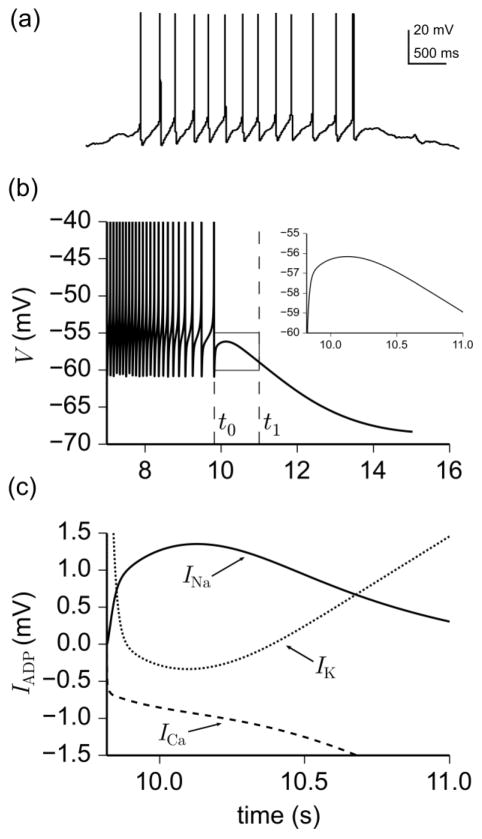Fig. 4.
The role of various ionic currents in the formation of afterdepolarization (ADP) following a parabolic burst as determined by the model, Eqs. (1)–(18). (a) Magnification of the last burst in Fig. 2a reveals an ADP after the last spike. (b) Model simulation of membrane potential during a parabolic burst. The ADP occurs in the interval [t0, t1], defined as the time between the nadir of the last spike (t0) and some time after the ADP peak (t1). (c) Contribution of Na+ currents INa = INaF + INaP (solid line), Ca2+ currents ICa = ILVA + IHVA + Is (dashed line), and K+ currents IK+ = IK + IA + IKCa (dotted line) to afterdepolarization (IADP) within the interval [t0, t1], as defined by Eq. (20). Notice that while INa and ICa both contribute positively to the formation of ADPs, ICa diminishes progressively within the interval [t0, t1]. This causes the total inward current to decrease and the total outward current, led by IKCa, to dominate and terminate the burst

